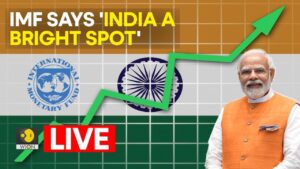
Inflation is an economic phenomenon characterized by a sustained increase in the general price level of goods and services over a period of time. It affects individuals, businesses, and governments alike, making it crucial to comprehend its causes, impacts, and potential strategies for mitigation. This article aims to provide a comprehensive understanding of inflation, shedding light on its underlying factors, consequences, and measures that can be undertaken to address its challenges.
I. Causes of Inflation:
- Demand-Pull Inflation: Demand-pull inflation occurs when aggregate demand surpasses the available supply of goods and services, leading to an increase in prices. Factors such as strong consumer spending, fiscal stimulus, or loose monetary policies can contribute to demand-pull inflation.
- Cost-Push Inflation: Cost-push inflation arises when the cost of production, such as wages or raw materials, increases, forcing businesses to pass on the additional expenses to consumers through higher prices. Factors like rising energy prices, higher import costs, or labor market imbalances can trigger cost-push inflation.
- Monetary Inflation: Monetary inflation is caused by an excessive increase in the money supply relative to the production of goods and services in an economy. When the money supply grows faster than economic output, the value of each unit of currency decreases, resulting in higher prices.
II. Impacts of Inflation:
- Reduced Purchasing Power: Inflation erodes the purchasing power of individuals and households. As prices rise, the same amount of money buys fewer goods and services, leading to a decrease in real income. Fixed-income earners, retirees, and those with limited savings are particularly vulnerable to the negative effects of inflation.
- Uncertainty and Economic Distortions: High inflation creates uncertainty and distorts economic decision-making. Businesses may struggle to accurately forecast costs and set prices, while consumers may postpone purchases due to expectations of further price increases. These distortions can hinder investment, economic growth, and overall stability.
- Redistribution of Wealth: Inflation can redistribute wealth within an economy. Debtors benefit from inflation as the real value of their debt decreases, while creditors suffer a loss in real purchasing power. Moreover, inflation often exacerbates income inequality, as those with greater wealth and assets are better positioned to hedge against rising prices.
III. Strategies for Mitigating Inflation:
- Monetary Policy: Central banks can employ monetary policy tools, such as adjusting interest rates or implementing quantitative easing, to manage inflation. Raising interest rates can curb excessive borrowing and reduce spending, while tightening the money supply can help control inflationary pressures.
- Fiscal Policy: Governments can use fiscal policy measures to tackle inflation. This includes adjusting tax rates, reducing public spending, or implementing prudent budgetary policies to control inflationary pressures. Fiscal discipline can help maintain price stability and restore confidence in the economy.
- Supply-Side Policies: Enhancing the productivity and efficiency of the economy through supply-side policies can mitigate inflationary pressures. Investing in infrastructure, improving education and skills training, and promoting innovation can lead to increased production capacity, thus alleviating supply constraints.
- Wage and Price Controls: In extreme cases, governments may resort to implementing wage and price controls to curb inflation. However, these measures are often considered temporary solutions as they can lead to distortions, shortages, and reduced incentives for businesses and workers.
However, it is important to note that addressing inflation requires a delicate balance. While high inflation can be detrimental to an economy, very low inflation or deflation can also have negative consequences. Central banks typically aim for a moderate level of inflation, often around 2%, as it allows for price adjustments, encourages spending and investment, and provides room for monetary policy maneuverability.
In recent years, some economies have faced unique challenges in managing inflation. Factors such as supply chain disruptions, global economic imbalances, and unexpected shocks (e.g., natural disasters or pandemics) can significantly impact inflation dynamics. As such, policymakers need to remain vigilant and adaptive to changing circumstances to effectively address inflationary pressures.
Furthermore, individuals and businesses can take certain measures to mitigate the effects of inflation on their finances. These include:
- Diversifying Investments: Investing in a diversified portfolio can help protect against inflation. Assets such as stocks, real estate, commodities, and inflation-protected securities (e.g., Treasury Inflation-Protected Securities) can provide a hedge against rising prices.
- Managing Debt: Inflation erodes the value of debt over time. Individuals with fixed-rate debt can benefit as they repay their loans with money that is worth less in real terms. However, it is important to avoid excessive debt burdens that could become unmanageable in the face of rising interest rates.
- Cost Efficiency and Bargaining Power: Individuals and businesses can seek cost-efficient alternatives and negotiate better deals to mitigate the impact of inflation. This may involve comparing prices, seeking discounts, or optimizing supply chains to control costs.
- Saving and Investing: Saving and investing in assets that outpace inflation can help preserve wealth. Investing in stocks, bonds, mutual funds, or other financial instruments can provide opportunities for capital appreciation and income generation.
- Continual Education and Skill Development: Enhancing one’s knowledge and skills through ongoing education and professional development can improve employability and earning potential. This can provide individuals with a stronger position to negotiate higher wages or seek better job opportunities in the face of inflationary pressures.
Conclusion
Inflation is a complex economic phenomenon that requires a multifaceted approach for understanding and mitigation. By comprehending the causes and impacts of inflation, and implementing effective monetary, fiscal, and supply-side policies, societies can strive for price stability, sustainable economic growth, and improved living standards. Additionally, individuals can adopt prudent financial strategies to protect their wealth and navigate the challenges posed by inflation.

